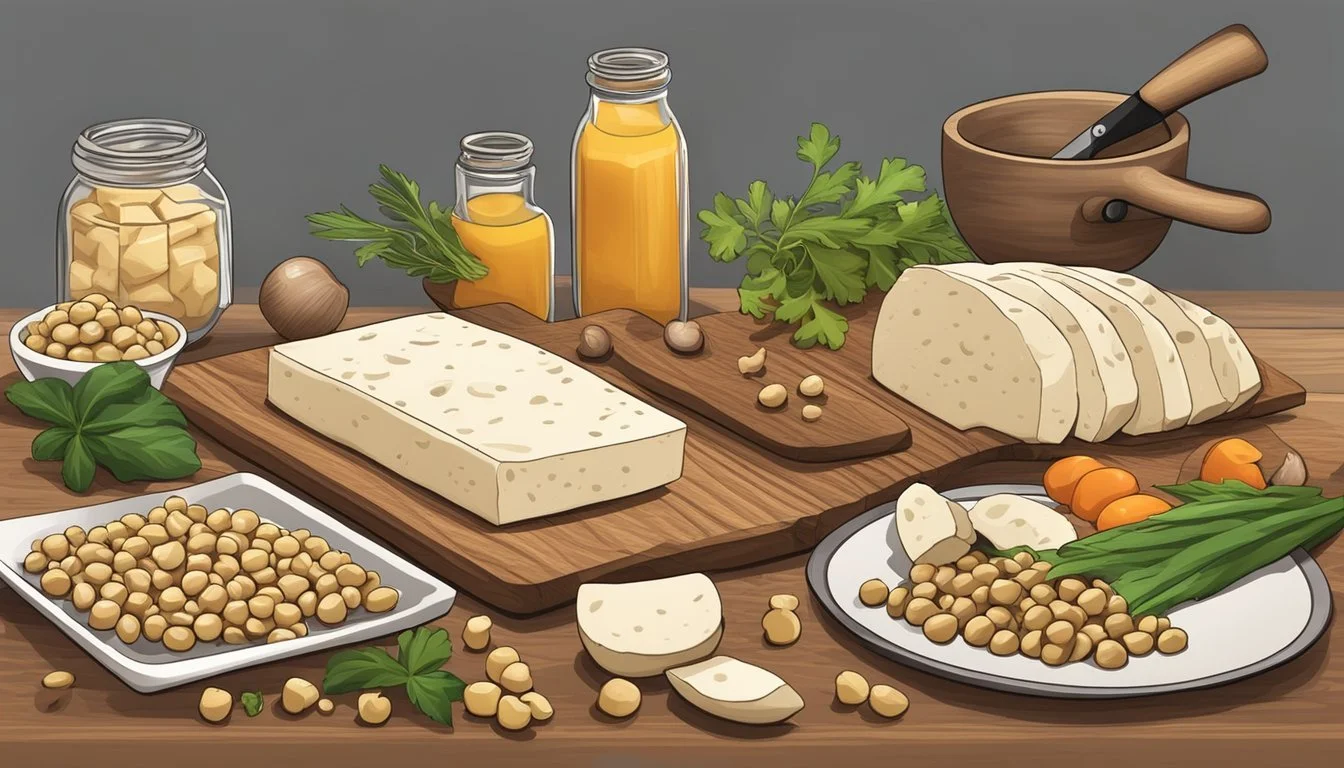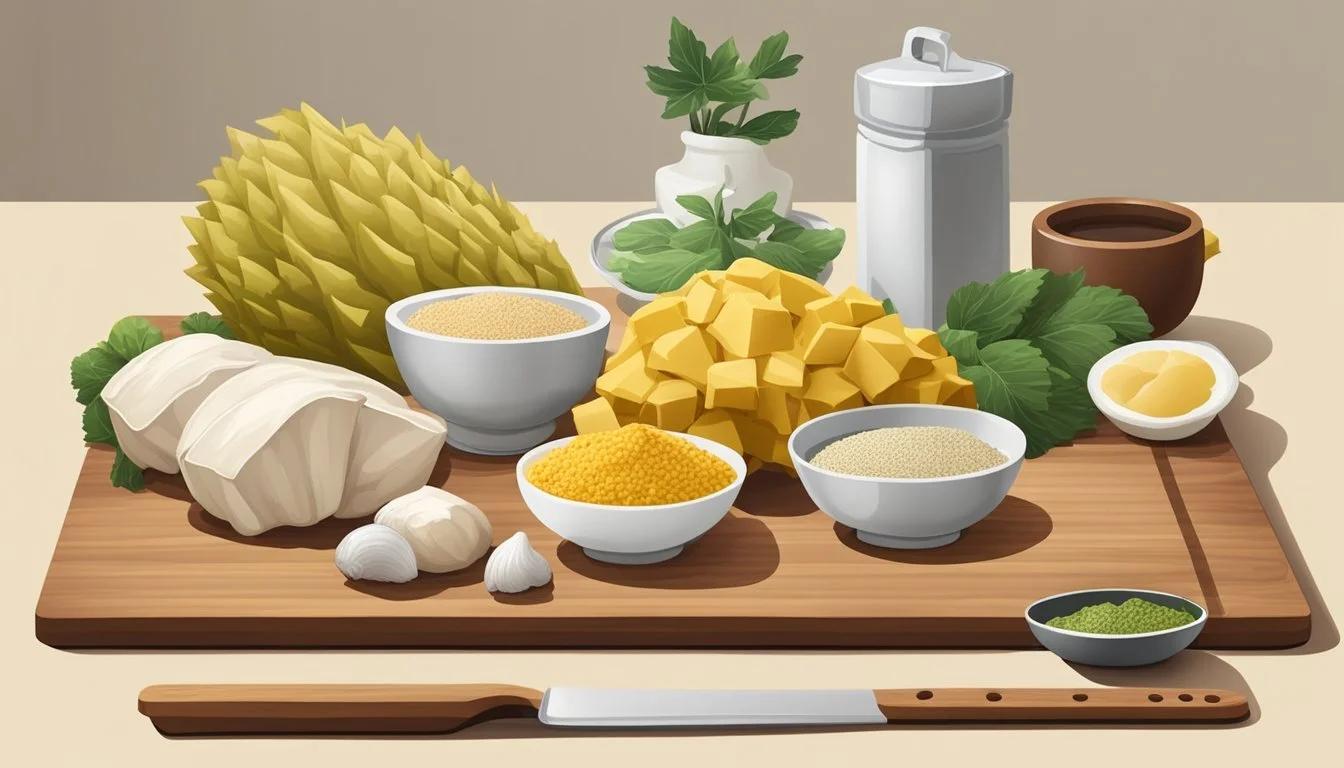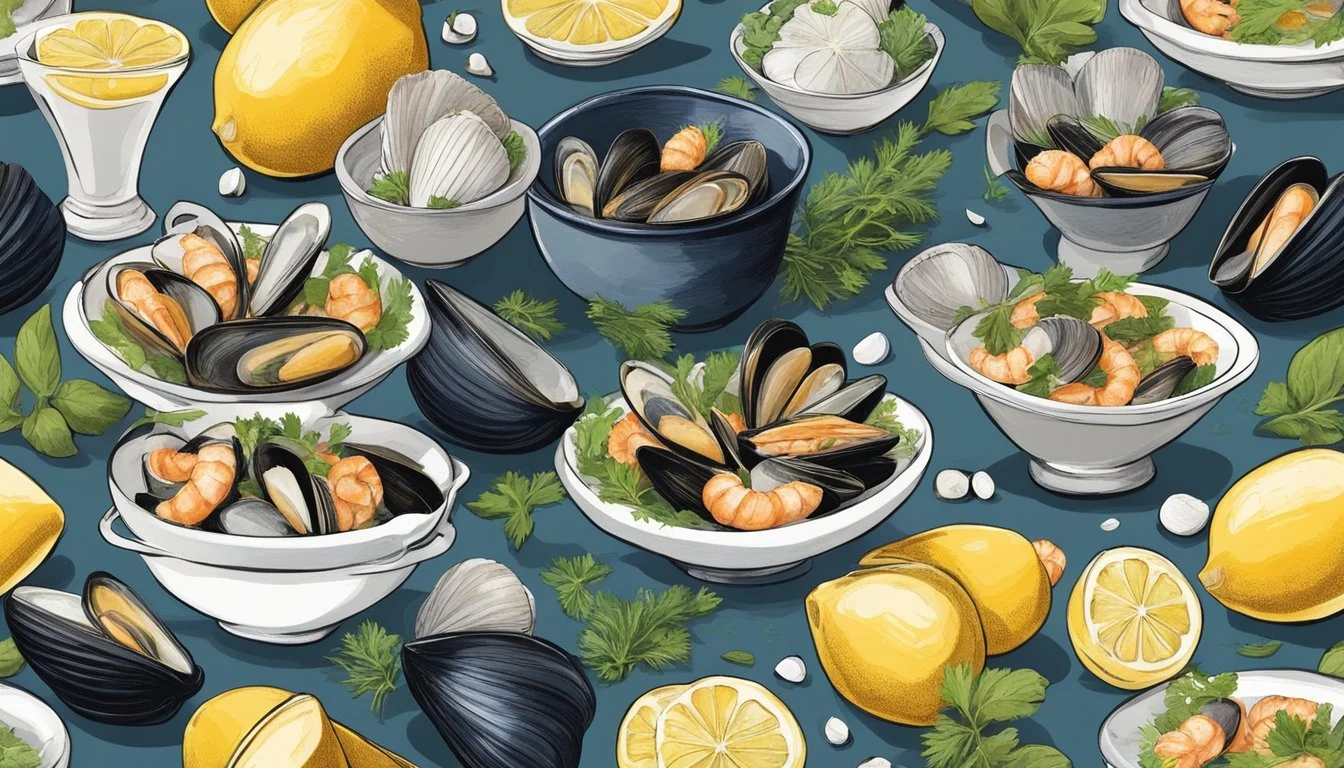Mussels Substitutes
Best Alternatives for Recipes
Mussels are a beloved ingredient in many seafood dishes, prized for their unique flavor and tender texture. When mussels are unavailable or undesirable, several excellent substitutes can fill their role in various recipes. These alternatives include clams, oysters, scallops, shrimp, lobster, crab, squid, octopus, and cockles.
Each substitute offers a distinct taste and texture while maintaining the essence of what makes mussels special. For instance, clams and scallops can be steamed or baked, delivering a similar culinary experience. This versatility ensures that whether you need a quick fix for a seafood stew or a more elaborate shellfish dish, there's a suitable replacement available.
Understanding the characteristics of each substitute helps in achieving the desired outcome in cooking. Whether opting for the sweet, tender bite of clams or the rich, succulent quality of scallops, knowing how to properly cook these alternatives will elevate your dishes to new heights.
Understanding Mussels
Mussels are a type of bivalve mollusk known for their rich nutritional profile and versatile culinary uses. Recognized for their unique texture and taste, these shellfish offer numerous health benefits, making them a popular choice in seafood dishes.
Characteristics of Mussels
Mussels belong to the family of bivalve mollusks, which have two hinged shells. They are typically blue, blue-black, or brown, and range from 2 to 4 inches in length. They have a slightly sweet, delicate flavor and a tender yet chewy texture.
Mussels are found in both saltwater and freshwater environments, with the most common variety being the blue mussel. Commonly farmed, they are usually cultivated on ropes suspended in water, which helps keep them clean and free from sand.
Nutritional Profile
Mussels are incredibly nutritious, offering a rich source of protein and low fat content. A typical 3-ounce serving provides around 20 grams of protein. They are also abundant in iron, omega-3 fatty acids, selenium, and vitamin B12.
Additionally, mussels pack significant amounts of manganese, phosphorus, and zinc. These minerals play vital roles in maintaining overall health, particularly in supporting immune function, bone health, and energy metabolism. Low in calories and high in nutrients, mussels are an excellent choice for a healthy diet.
Culinary Uses
Mussels are celebrated for their versatility in the kitchen. They can be steamed, boiled, baked, or grilled, and they absorb the flavors of the ingredients they are cooked with. Steaming is a popular method, often done with white wine, garlic, and herbs, resulting in a flavorful broth.
They are often used in soups, chowders, and pasta dishes. Fresh mussels should be closed and will open when cooked—any that remain closed after cooking should be discarded. Properly cleaned mussels free from sand contribute to a delightful dining experience, making them a favored ingredient in many seafood recipes.
Substitutes for Mussels
Finding suitable alternatives for mussels can be easy if you consider the texture, flavor, and dietary requirements. Options range from other shellfish to non-seafood and vegan choices.
Similar Texture and Flavor
Clams, Oysters, and Scallops
Clams and oysters offer a similar briny taste and chewy texture. Steaming clams until they open takes around 5-10 minutes, while scallops can be steamed for 2-3 minutes. Baking scallops at 400°F (204°C) for about 10-12 minutes can replicate the mussel experience.
Shrimp and Octopus
Shrimp brings a mild flavor with a firm texture. Octopus can be a bit tougher but provides a unique twist. Both are versatile in various recipes, making them great alternatives.
Non-Seafood Options
Tofu
Tofu can mimic the texture of mussels when cooked properly. Marinate firm tofu in seaweed or soy sauce to infuse a seafood-like flavor. It's versatile for soups, stews, and stir-fries.
Chickpeas
Chickpeas offer a slightly nutty taste and firm texture. They work well in dishes like stews and salads. While they don’t replicate the seafood flavor, they provide a hearty substitute.
Vegan and Vegetarian Substitutes
King Oyster Mushrooms
King oyster mushrooms have a chewy texture similar to mussels. Slicing them and cooking them in vegan broths can emulate the seafood experience. They soak up flavors well and suit many recipes.
Other Plant-Based Options
Using seaweed or kelp can add a seafood-like taste to dishes. These ingredients can be found in many stores and can be cooked with various vegan products to create a satisfying alternative to mussels.
Preparing Substitutes
Selecting the right substitute for mussels and using the correct cooking techniques are crucial for achieving a delicious result. Different substitutes require specific preparation methods and cooking times for optimal taste and texture.
Selecting and Storing Substitutes
When choosing substitutes for mussels, freshness is key. Look for fresh clams, oysters, scallops, shrimp, lobster, crab, squid, octopus, cockles, and razor clams at seafood markets or reputable grocery stores. These alternatives should have a fresh smell and closed shells if applicable.
Storage is equally important. Keep them at a cold temperature, ideally in the fridge at 32-40°F (0-4°C), and consume within a day or two. For longer storage, freeze the alternatives, but remember that freezing might affect texture slightly.
Cooking Techniques for Substitutes
Different cooking techniques bring out the best qualities in each substitute. Steaming works well for clams, which should be steamed until the shells open, typically 5-10 minutes. Scallops also respond well to steaming, requiring just 2-3 minutes.
Boiling shrimp until they turn pink and opaque is quick and effective. Baking is suitable for scallops, which should be baked at 400°F (204°C) for about 10-12 minutes, enhancing their natural sweetness.
Grilling is an excellent method for octopus, usually requiring pre-boiling to tenderize before grilling for added flavor. Sautéing shrimp or squid with garlic and herbs in a pan over medium heat for a couple of minutes brings out rich flavors and a succulent texture.
Recipes and Pairings
When looking for substitutes for mussels in various dishes, there are numerous recipes and pairings that can deliver a similar culinary experience. This includes a variety of seafood dishes, hearty soups and stews, and delicious pasta and paella combinations. Each provides a unique way to enjoy seafood flavors with alternative ingredients.
Seafood Dishes
Substituting mussels with clams, scallops, or shrimp can yield delightful results in seafood dishes. Clams, when cooked in a garlic butter sauce with a splash of white wine, offer a complementary texture and flavor profile similar to mussels. Seared scallops, seasoned with lemon juice and parsley, provide a tender and sweet alternative.
A simple yet satisfying recipe involves sautéing shrimp in olive oil, garlic, and herbs. The shrimp's firm texture makes it an excellent choice for replacing mussels. Pair these dishes with crusty bread to soak up the savory juices.
Soups and Stews
Soups and stews featuring fish, calamari, or crab can easily replace mussel-based recipes. A seafood chowder can be made with chunks of fish and crab meat in a creamy broth, infused with garlic, onions, and butter. For a lighter option, calamari works well in a tomato-based broth, seasoned with spices and herbs.
Fish stew, often enriched with white wine, lemon juice, and parsley, can be a perfect substitute for mussel stews. These hearty dishes gain depth from the flavorful broth and the diverse textures of the seafood included.
Pasta and Paella
In pasta dishes, consider squid or small lobster tails as great mussel substitutes. A classic spaghetti alle vongole can be made with clams, white wine, garlic, and olive oil for a rich, seafood-forward flavor. Alternatively, use calamari in a seafood pasta, sautéed with tomatoes, herbs, and spices for an appetizing meal.
For paella, shrimp and chorizo make a vibrant and flavorful addition, echoing the traditional surf-and-turf combination. Incorporate saffron, paprika, and a mix of bell peppers to mimic the classic taste of paella. Adding peas and lemon wedges enhances the dish, making it visually appealing and satisfying.
Additional Tips and Tricks
When substituting mussels, proper preparation and seasoning techniques are key to achieving the best texture and flavor. Understanding common pitfalls and methods to enhance the dish can greatly improve the outcome.
Avoiding Common Mistakes
To avoid the mussel substitute becoming tough or rubbery, it is important not to overcook. For example, scallops should be steamed for only 2-3 minutes or baked for 10-12 minutes at 400°F (204°C), ensuring they remain tender and juicy.
Texture is crucial. Clams, for instance, should be steamed until their shells open, usually between 5-10 minutes. Cooking past this point can make them chewier and less pleasant to eat.
Freshness matters. Using spoiled substitutes can lead to a fishy smell and taste. Always ensure seafood is fresh and properly cleaned to remove any lingering sand or debris before cooking.
Enhancing Flavor and Aroma
Proper seasoning can transform a seafood dish. When using clams or scallops, adding lemon juice can complement their natural sweetness, while enhancing their flavors and aromas.
For a more robust taste, consider incorporating garlic, butter, or a white wine sauce. These ingredients blend well with seafood, adding depth to the dish without overpowering it.
Experimenting with herbs like parsley or thyme can provide a fresh and aromatic touch. Incorporate these herbs towards the end of cooking to retain their vibrant flavors.
Using the right cooking techniques and flavor enhancers can ensure that your mussel substitutes not only match but even elevate the dining experience.




